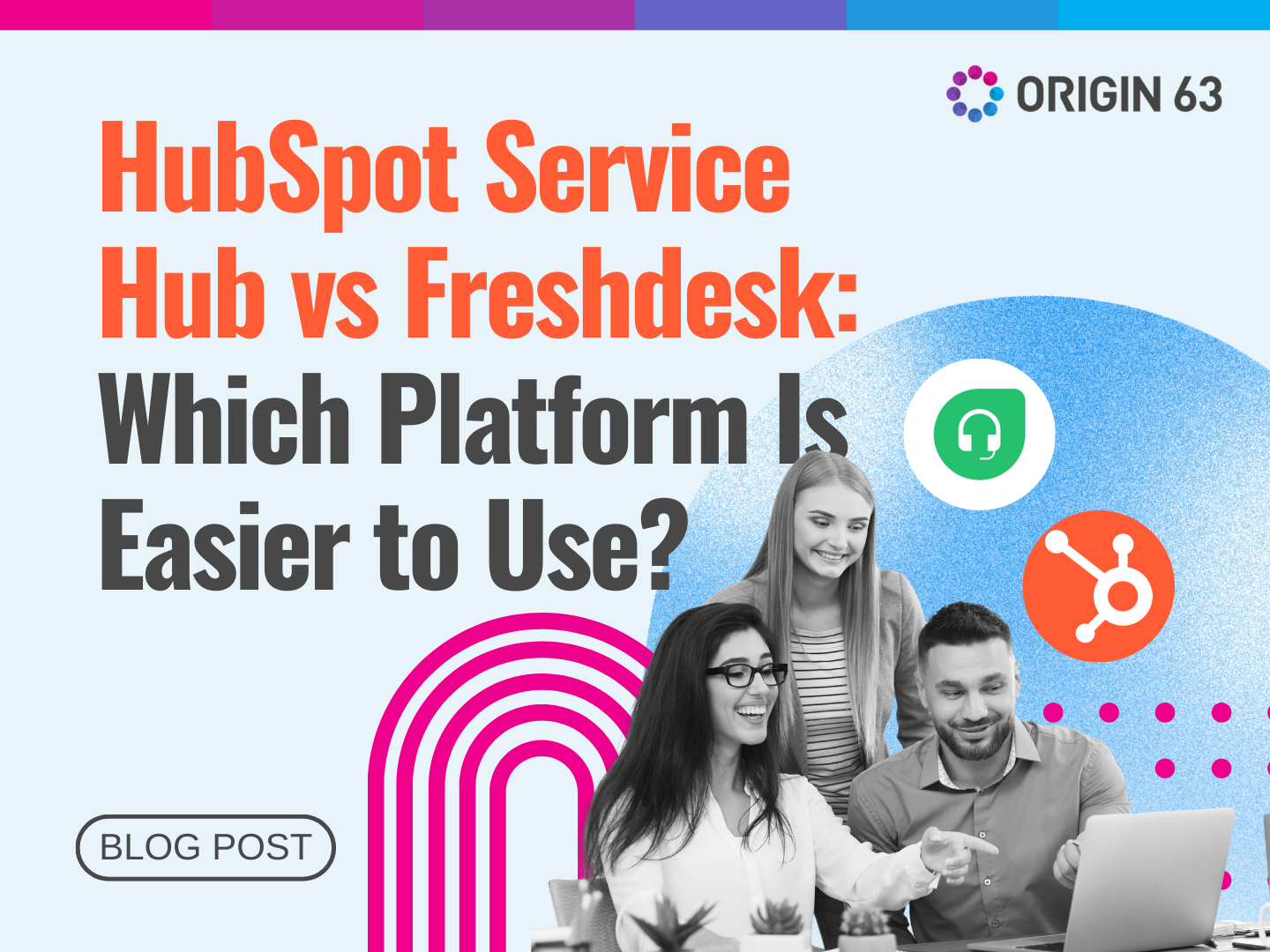Saying goodbye to a customer means saying goodbye to the long-term value they could have brought to your business. But you don't have to wait for churn to strike. You can get ahead of it.
HubSpot's Customer Success Workspace helps you stop churn before it starts. It lets you spot potential issues, monitor customer health, and ensure your customers are happy and thriving.
In this blog, we'll walk you through how to use this workspace to proactively manage customer relationships, reduce churn, and fuel your growth.
What Is HubSpot’s Customer Success Workspace?

Managing customer relationships can be tough, especially with multiple accounts at different stages. HubSpot's Customer Success Workspace is here to simplify that.
It's a one-stop platform for customer success managers (CSMs) to access the tools and data they need to keep accounts on track.
With this workspace, you can easily view customer info, monitor account health, manage tasks, and stay ahead of renewals. The goal? Proactively meet customer needs, reduce churn, and drive long-term growth.
How to Access HubSpot’s Customer Success Workspace

First things first—let's ensure you can access the Customer Success Workspace. If you have a HubSpot Service Hub Pro or Enterprise subscription, you're in luck! Here's how to find it:
- Log in to your HubSpot account and navigate to the main menu.
- Look for the "Service Hub" section, and you should see an option for "Customer Success Workspace" (or something similar).
- Click on it, and voila—you're in!
If you don't see the workspace right away, don't worry. You may need to enable it under your account settings' Service Hub features or beta programs. Reach out to HubSpot support if you need any help setting up.
How to Customize the Workspace
Now that you've accessed the workspace, it's time to make it your own. Here are a few ways you can tailor it to your specific workflow:
1. Add Your Favorite Reports
Choose from existing reports or create new ones to track the metrics that matter most, like account health scores or upcoming renewals. Pin these reports to your workspace for quick, data-driven insights.
2. Set Up Your Calendar
Connect your calendar to see all your customer meetings and tasks in one place. This holistic view of your day combines account details with your schedule, preventing double-booking and ensuring you're well-prepared for each customer interaction.

3. Customize Your View
Users can typically rearrange elements within their workspace, choosing which information to display prominently and which to keep in the background.
This customization ensures that the most critical information for your workflow is always front and center, improving efficiency and reducing time spent searching for data.
4. Create Shared Views
You can create and save filtered views of your account portfolio, which can be shared with team members or kept private. Shared views allow for better team collaboration and consistent account management, enabling quick access to specific segments of your portfolio.
5. Add Relevant Pipelines
If you use different pipelines for support tickets or deals, add them to your workspace for easy access. Having relevant pipelines in your workspace provides a comprehensive view of all ongoing processes related to your accounts, ensuring nothing falls through the cracks.
6. Personalize Your Task List
Set up your task list to show your most important to-dos. You can usually prioritize tasks and set due dates to keep yourself organized. You can also link tasks to specific accounts or contacts, clearly showing your priorities for the day or week.
Setting up recurring tasks for monthly check-ins with your top 10 accounts could ensure regular engagement with your most valuable clients.
Managing Customer Accounts with Insights and Health Scores

When it comes to customer retention, prevention is better than cure. Losing a customer doesn't just mean losing revenue—on average, each churned customer costs a business around $243.
But how can you spot customers at risk before they churn? That’s where Customer Health Scores come in.
What are Customer Health Scores?
Customer Health Scores are a quick way to gauge the strength of your customer relationships. These scores let you see at a glance whether a customer will likely stick around, grow their business with you, or head for the exit.
Health scores help you catch potential issues early and find growth opportunities before they slip away.
Here are a few factors you can use to measure health scores:
- Product usage metrics
- Customer feedback and satisfaction ratings
- Marketing engagement levels
- Website Activity
- Support ticket history
How to Set Up Health Scores in HubSpot
Setting up effective Health Scores in HubSpot involves identifying key metrics and configuring the system to reflect your customer relationships accurately. It involves two steps:
1. Identifying Key Metrics and Indicators
Start by analyzing your customer data to pinpoint what signals success or churn. This could include quantitative metrics like login frequency and qualitative ones like survey responses. For example, a software company might track:
- Daily logins
- Number of features used
- Support ticket volume
- NPS (Net Promoter Score)
Prioritize these metrics based on what drives your customer’s journey. For instance, if engaging with educational content predicts renewals, give that a higher weight in your health score.
2. Configuring Health Score Parameters in HubSpot
To set up health scores in HubSpot, start by assigning point values to different customer activities. Positive actions, like frequent logins or trying out new features, should add points to a customer’s score.
For example, you might give a daily login +5 points and use a new feature +10 points. On the other hand, negative actions, such as opening many support tickets, should subtract points.
Once you assign these point values, establish thresholds to categorize health scores. A score between 80 and 100 could indicate a "Healthy" account, and anything below 50 could flag the account as "At Risk."
Viewing and Interpreting Health Scores
Now that you've set up your health scores, it's time to use them. Health scores are only valuable if you use them to guide your customer success efforts.
1. Accessing Health Score Reports
Once you’ve set your health scores, use them to guide your customer success strategy. Access these reports through HubSpot’s Customer Success Workspace. Consider creating a custom dashboard to monitor health score trends across your customer base.
Options to explore:
- Sort accounts by health score
- Filter for at-risk accounts
- Track health score trends over time
For example, you might filter accounts with scores below 50 to identify those needing immediate attention.
2. Analyzing Health Score Data for Insights
Health scores aren’t just numbers—insights that can drive your actions. Look for patterns among customer segments to identify early signs of risk. Are specific customer segments more prone to low scores? It helps identify early risk factors.
Monitor trends carefully. If a score suddenly drops, dig deeper. Did the customer stop using key features or raise several support tickets?
Prioritize your efforts based on score changes. A significant drop, for instance, from 85 to 70, should be treated as a red flag. Address these accounts with targeted actions to prevent further decline.
On the flip side, celebrate improvements. When scores rise, contact the customer to recognize their progress and understand what’s working.
Tracking Customer Satisfaction and Engagement
Understanding how customers feel about your product or service is another way to reduce churn. Knowing what they need is a priority for 66% of consumers when staying loyal to brands.
Here’s how to use HubSpot’s features to boost customer satisfaction and engagement.
1. Setting Up Customer Satisfaction Surveys

Surveys are your way of listening to customers. HubSpot offers several types—CSAT (Customer Satisfaction), NPS (Net Promoter Score), and CES (Customer Effort Score).
Choose the one that fits your needs: CSAT for quick feedback after interactions, NPS to gauge overall loyalty, and CES to assess how easy it is for customers to use your product.
Creating and distributing surveys in HubSpot is simple. You can send them via email, pop them up on your website, or trigger them after a chat session. Customize your survey’s design and questions, keeping it short and easy for better response rates.
2. Monitoring Survey Responses
Once surveys are sent, HubSpot automatically collects and organizes the responses. The Feedback Surveys section lets you easily view individual feedback or overall trends.
Analyze this data to spot patterns—are certain features leading to higher satisfaction, or is there a recurring pain point?
3. Using Insights to Improve Satisfaction
Turn these insights into action. HubSpot's analytics help you identify trends and pain points, guiding your next steps.
For example, consider revisiting its design if many customers struggle with a specific feature. Conversely, if a particular aspect of your service consistently receives praise, use that as a marketing highlight.
Set up automated workflows in HubSpot to ensure no feedback is overlooked. These workflows can trigger actions based on survey responses, like assigning a follow-up task for dissatisfied customers or sending a review request to happy ones.
This way, you address issues promptly and leverage positive feedback to enhance your brand's reputation.
Proactively Addressing Customer Needs

Being reactive is not enough. HubSpot's Customer Success Workspace provides powerful tools to anticipate and address customer needs before they become problems.
Here’s how to do it:
1. Setting Up Alerts and Notifications
Managing a large customer portfolio can be overwhelming, but HubSpot’s alert and notification system is your early warning system.
To monitor customer satisfaction, you can set up alerts for low health scores. For instance, you can automatically alert the account manager if a customer’s health score drops below a threshold (e.g., 70).
The automation might involve creating a task for immediate follow-up or sending an email notification. These alerts help you catch potential issues before they escalate.
You can also configure notifications for other important events, such as contract renewal dates or significant usage milestones. For example, you might set a notification to alert you 90 days before a customer’s contract renewal.
This timely reminder lets you engage the customer proactively, perhaps by scheduling a review meeting to discuss renewal options or upsell opportunities.
2. Automating Follow-Up Actions
Identifying potential issues is just the first step; taking swift action is crucial. HubSpot’s automation capabilities enable you to ensure no customer falls through the cracks.
For example, you can create workflows that trigger specific actions when a customer’s health score drops.
The workflow could generate a task for the account manager to review the situation, send an email to gather feedback and schedule a follow-up call if the issue isn’t resolved.
You can also use HubSpot’s automation for proactive engagement. Set up workflows to send personalized educational content based on a customer’s usage patterns.
If a customer isn’t using a feature of your product, an automated email can offer tips on how to maximize that feature. This engagement keeps customers informed and ensures they get the most value from your product, which can significantly enhance satisfaction and loyalty.
Here’s how to create workflows on HubSpot:
- Navigate to Automation> Workflows.
- Click "Create Workflow" and choose to start from scratch or a template.
- Select your workflow's object types (contacts, companies, deals, etc.)

- Set the enrollment criteria to specify which records should trigger the workflow.
- Add actions and delays to the workflow, such as updating properties, sending emails, creating tasks, or enrolling in other workflows.
- Set up any filters or branch logic to customize the workflow's behavior.
- Review and publish the workflow to start automating your repetitive tasks.
3. Personalizing Customer Interactions
Generic communication is a thing of the past. 99% of marketers agree that personalization strengthens customer relationships, with 78% believing it has a significant impact.
HubSpot’s tools let you personalize interactions at scale, making each customer feel valued and understood.
Start by tailoring your communications using the customer data stored in HubSpot’s CRM. Personalization tokens can be used in emails to automatically insert customer-specific details, such as their first name, recent interactions, or specific product usage.
This small touch can make a big difference in how your message is received.
Segmentation is another powerful tool. You can create content directly relevant to each segment when you categorize customers based on criteria like industry, company size, or usage patterns. It ensures that your communications are highly relevant, increasing their impact.
Reducing Customer Churn
Reducing churn means spotting the warning signs early. HubSpot offers various tools to help you identify and address at-risk customers.
Here’s a streamlined approach to managing and reducing churn:
1. Monitor Metrics and Identify Early Warning Signs
Keep an eye on health scores and engagement metrics to spot potential churn. Set up HubSpot to track health scores and generate reports for accounts with significant declines, such as a drop of 10 points or more in a month.
Monitor engagement metrics like login frequency and feature usage, creating reports for accounts that haven’t logged in for 30 days.
Watch for qualitative signs like increased support tickets, changes in key contacts, and upcoming contract renewals. These indicators can help you pinpoint at-risk customers early.
2. Develop and Implement Personalized Retention Strategies
Once you've identified at-risk customers, create tailored retention plans based on their history and specific needs. Use HubSpot’s workflow tool to set up customized outreach efforts, such as scheduling check-ins, sending targeted content, or offering additional training.
For example, if a customer isn’t using a key feature, provide how-to content and arrange a follow-up call. Engage these customers proactively with personalized offers or solutions designed to address their unique concerns.
3. Track Effectiveness and Analyze Churn Trends
Measure the success of your retention strategies by tracking changes in health scores and analyzing overall churn rates.
Set up a HubSpot dashboard to monitor improvements in health scores for targeted accounts and compare scores before and after implementing your strategies.
Review churn rates over time using custom reports to identify trends and patterns. Segment data by customer type, product line, or account size to assess the impact of your retention efforts and refine your approach as needed.
Elevate Your Customer Retention Strategy
Reducing customer churn requires a proactive and data-driven approach. Effectively monitoring health scores, recognizing early warning signs, and implementing personalized retention strategies can significantly enhance customer satisfaction and loyalty.
HubSpot's Customer Success Workspace offers the tools and insights to avoid potential issues and strengthen client relationships.
You'll be well-equipped to turn at-risk customers into long-term advocates when you leverage these features.
Partner with Origin 63 for Seamless HubSpot Integration
Ready to take your customer success strategy to the next level? Partner with Origin 63 to implement HubSpot and harness the full potential of the Customer Success Workspace.
Our experts will guide you through setup, customization, and optimization to ensure you get the most out of your HubSpot investment. Start today and transform your customer relationships with tailored insights and proactive strategies.
Contact us now to begin your journey towards enhanced customer success!













.png?width=90&height=90&name=Arrows%20Partner%20Badge-test%20(1).png)

